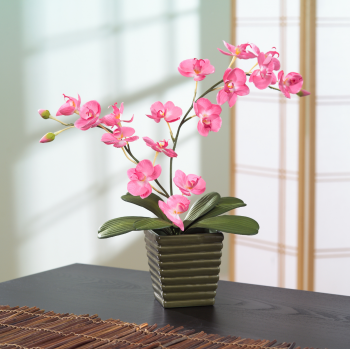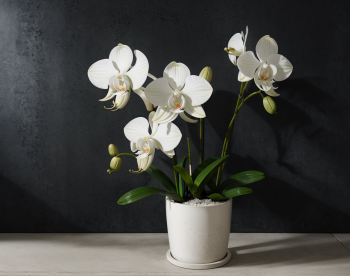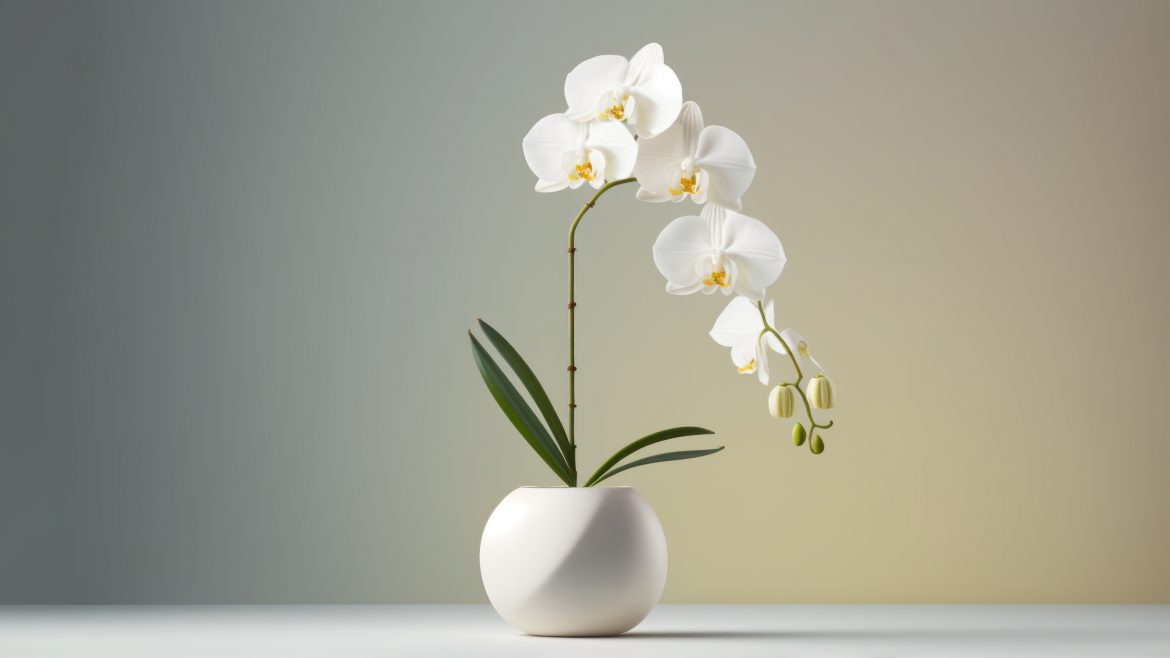Orchids are often seen as the divas of the plant world—elegant, exotic, and a touch temperamental. Yet, beneath their delicate appearance lies a resilient nature. These plants are tougher than they look and, importantly, they don’t appreciate being overhandled. With the right approach, you can enjoy their stunning blooms without constant attention.
ALSO SEE: The ultimate list of difficult houseplants to add to your collection

Canva
Understanding your orchid
Before diving into care routines, it’s essential to know your orchid type. The most common houseplant variety is the Phalaenopsis, or moth orchid. These are epiphytes, meaning they naturally grow on trees, drawing moisture and nutrients from the air and rain. This background informs their care needs, especially regarding light, water, and potting medium.
Light and temperature
Orchids thrive in bright, indirect light. A spot near an east or north-facing window is ideal. Direct sunlight can scorch their leaves, so it’s best to avoid placing them in harsh sun. Temperature-wise, they prefer a consistent range between 18°C and 24°C. Sudden temperature drops or drafts can stress the plant, hindering its growth and blooming potential.
Watering wisely
Overwatering is a common pitfall in orchid care. These plants prefer to dry out slightly between waterings. A good rule of thumb is to water once a week during warmer months and reduce frequency in cooler periods. Ensure the potting medium is dry before the next watering. When you do water, do so thoroughly, allowing excess water to drain completely. Avoid letting the roots sit in water, as this can lead to rot.

Canva
Humidity and air circulation
Orchids enjoy a humid environment, ideally between 50% and 70%. If your home is dry, especially in winter, consider placing a humidity tray beneath the orchid or using a room humidifier. However, balance is key; excessive humidity without proper air circulation can promote fungal diseases. Ensure the area is well-ventilated to keep your orchid healthy.
Feeding and fertilising
During the growing season, typically spring and summer, orchids benefit from regular feeding. Use a balanced, water-soluble fertiliser formulated for orchids, applying it at half strength every two weeks. In the dormant period, reduce feeding to once a month. Over-fertilising can harm the plant, so it’s better to underfeed than overdo it.
Potting and medium
Orchids require a well-draining potting medium, such as bark or sphagnum moss, to mimic their natural growing conditions. Repotting every two years helps refresh the medium and provides room for growth. When repotting, choose a pot with ample drainage holes to prevent water accumulation.

Pexels
Pruning and encouraging blooms
After your orchid’s flowers fade, you can encourage new blooms by pruning the flower spike. Cut just above a visible node on the spike; this may stimulate a new flower shoot. However, if the spike turns brown, it’s best to cut it back to the base. Remember, patience is vital—orchids may take several months to rebloom.
Minimal Fuss, maximum reward
While orchids are resilient, they don’t appreciate constant interference. Once you’ve established a care routine, resist the urge to over-tend. Observe your plant, adjust care as needed, and allow it the time to thrive. With minimal fuss, your orchid can reward you with stunning, long-lasting blooms.
ALSO SEE:
Featured Image: Canva

